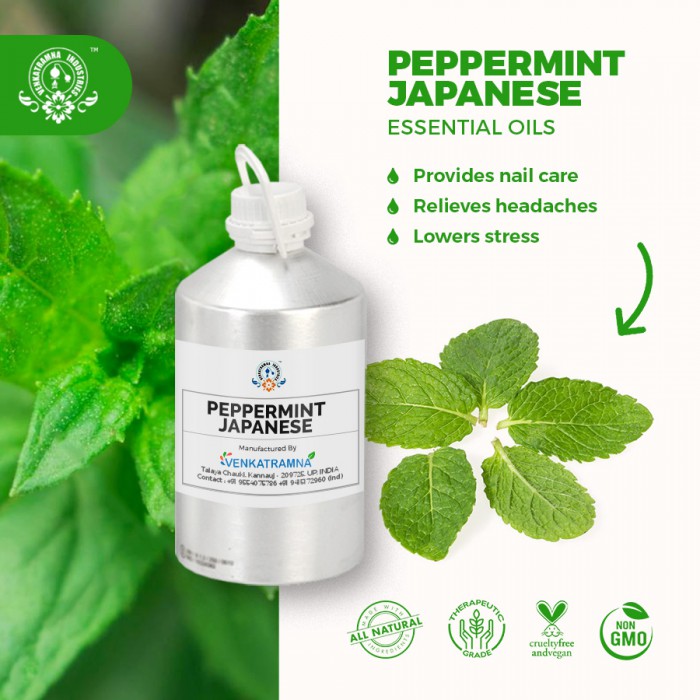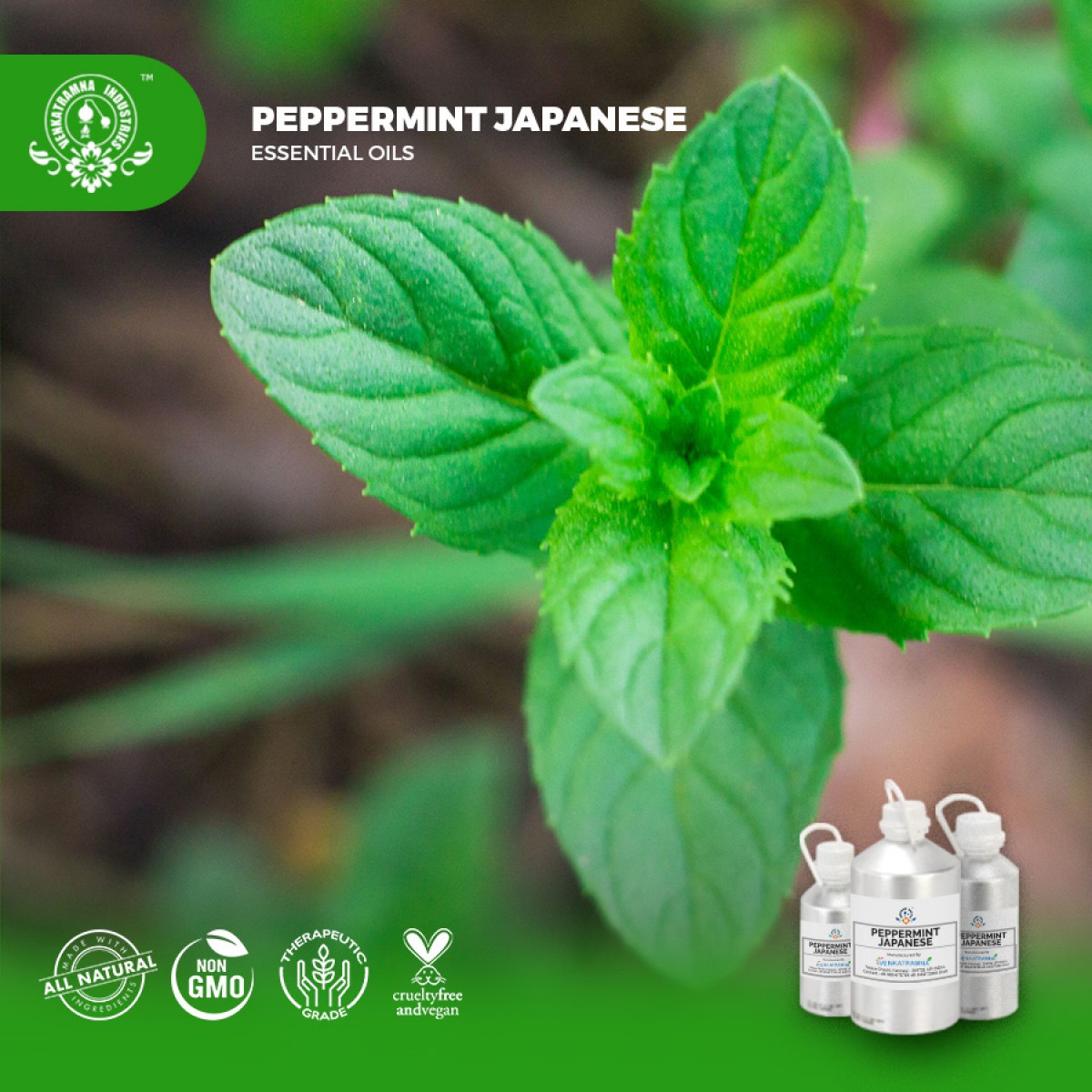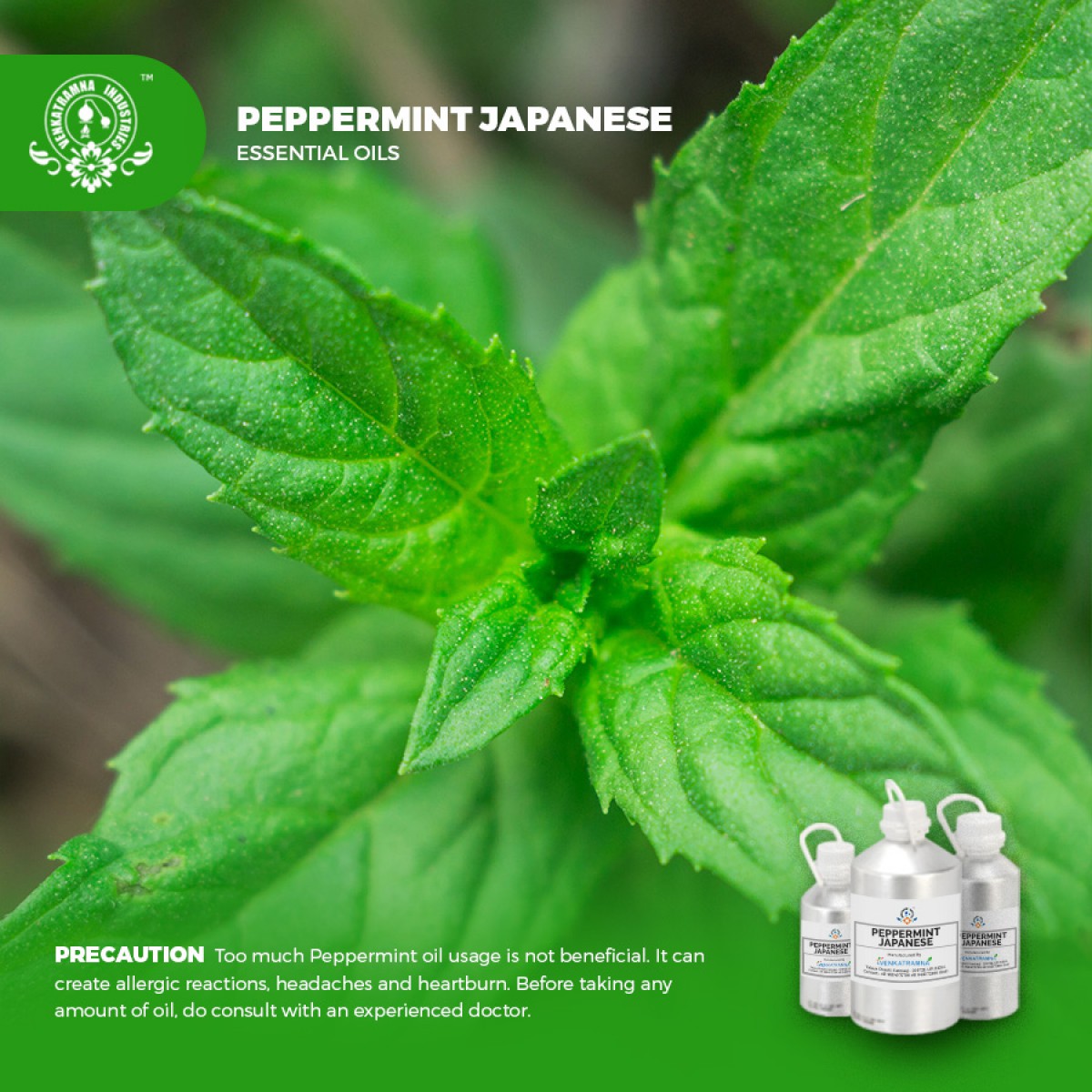Botanical Name: Mentha arvensis Common name: Field mint, Chinese or Japanese mint Read More
|
Botanical Name: |
Mentha arvensis |
|
Common name: |
Field
mint, Chinese or Japanese mint |
|
Plant
family: |
Lamiaceae |
|
Genus: |
Mentha |
|
Appearance/Color: |
Colorless to pale yellow liquid having thin consistency |
|
Odor: |
It has
a top note in aromatic category. The presence of powerful peppermint scent
makes it a popular essential oil. |
|
Blends With: |
Blends well with Cajeput, Eucalyptus, Basil, Cedarwood,
Mandarin, Niaouli, Rosemary, Bergamot, Pine, Lime, Lemon, Thyme and Spearmint
are used blend and formulate other useful products. |
|
Origin: |
Japan |
|
Source: |
Leaves |
|
Method
of Extraction: |
Steam
Distillation |
Peppermint
essential oil is best suitable for oral and other uses. It is the most
important category of essential oils which provides a sense of peace to the
mind and senses. While using, this oil creates a sensation of tingling in the
mouth or over the skin. It is also recommended by doctors and medical
practitioners as an anti-nausea resource.
The capability of this oil to reduce muscles twitches, it is known as the immediate relief for pain for sports persons. Researchers consider this as the most ancient herb which has been used for years to serve different medical purposes. Many products formulated by Peppermint Essential Oil that are gaining accreditation across the world due to the quick relief in severe problems.
DISCLAIMER
The complete range of conditions
or methods of use are beyond our control therefore we do not assume any
responsibility and expressly disclaim any liability for any use of this
product. Information contained herein is believed to be true and accurate however,
all statements or suggestions are made without warranty, expressed or implied,
regarding accuracy of the information, the hazards connected with the use of
the material or the results to be obtained from the use thereof. Compliance
with all applicable federal, state, and local laws and local regulations
remains the responsibility of the user.
The FDA has not evaluated the
statements on this website. No claims are made by Venkatramna Industries as to
the medicinal value of any products from vriaroma.com or by us. The information
presented here is for educating our customers about the traditional uses of
essential oils and is not intended to diagnose, treat, cure, or prevent any
disease. You are responsible for understanding the safe application of these products.
If you have any questions, please call or email us for further information.
As per NAHA guidelines, New Directions Aromatics
(NDA) does not recommend the ingestion of essential oils. It is imperative to
consult a medical practitioner before using Essential Oils for therapeutic
purposes. Pregnant and nursing women and those taking prescription drugs are
especially advised not to use this product without the medical advice of a
physician. The oil should always be stored in an area that is inaccessible to
children, especially those under the age of 7.
Peppermint is used as a flavoring agent in the
food industry, and in soaps, candles and toiletries.
The
peppermint essential Japanese oil is often attributed with an incredible
wealth of useful medical properties; it is even more incredible, though, that
it never failed to help a number of different inconvenient conditions like
nausea, mild stomach upset or cold.
Peppermint essential oil Japanese is a powerful natural insecticide, killing and repelling
fleas, mosquitoes, ants and other bugs in your home and garden without toxic
chemicals.
It is efficient in treating
gastro intestinal discomfort associated with bloating, and as an inhaler in
respiratory complaints.
Peppermint essential oil Japanese is used for
muscular pain relieving.
COMMON USAGE
·
Promotes
digestion
·
Acts as dental
care product
·
Provides nail
care
·
Relieves
headaches
·
Lowers stress
·
Cures body
strains
·
Reduces urinary
infection
·
Heals respiratory
problems
·
Eliminates pain
·
Improves immune
system
·
Improves hair
growth
·
Treats skin
ailments
·
Enhances blood
circulation
Ingredients:
|
S.No |
Key Constituents |
Strength (%) |
|
1 |
()-Menthol |
19.0–54.2 |
|
2 |
()-Menthyl acetate |
2.1–10.6 |
|
3 |
Menthone |
8.0–31.6 |
|
4 |
Neomenthol |
2.6–10.0 |
|
5 |
1,8-Cineole |
2.9–9.7 |
|
6 |
(6R)-(þ)-Menthofuran tr |
9.4 |
|
7 |
Isomenthone |
2.0–8.7 |
|
8 |
Terpinen-4-ol |
0–5.0 |
|
9 |
(1R)-(þ)-b-Pulegone |
0.3–4.7 |
|
10 |
Germacrene D tr |
4.4 |
|
11 |
(þ)-Limonene |
0.8–4.5 |
|
12 |
b-Caryophyllene |
0.1–2.8 |
|
13 |
Piperitone |
0–1.3 |
|
14 |
Isomenthol |
0.2–1.2 |
|
15 |
(E)-Sabinene hydrate |
0.2–2.4 |
|
16 |
b-Pinenes |
0.6–2.0 |
Safety Summary
·
Hazardous No Data
·
Contraindications Not Known
Systemic Effects
·
Acute Toxicity Not known
·
Skin corrosion/irritation: May be irritating to
skin.
·
Serious eye damage/irritation: No data available
·
Germ cell mutagenicity: Not specified
·
Carcinogenicity: Ingredients within this product
are not found on the following lists: FEDERAL OSHA Z LIST, NTP, IARC, or
CAL/OSHA and therefore are not considered to be, nor suspected to be,
cancer-causing agents by these agencies
·
Reproductive toxicity: No data available
·
STOT-single exposure: No data available
· STOT-related exposure: No data available
·
Toxicity Acute fish toxicity: No data available
·
Toxicity to aquatic plants: No data available
·
Toxicity to microorganisms: No data available
·
Persistence and degradability: No data available
·
Bio-accumulative potential: No data available
·
Mobility in soil Unknown





 MSDS-Peppermint.pdf
MSDS-Peppermint.pdf




